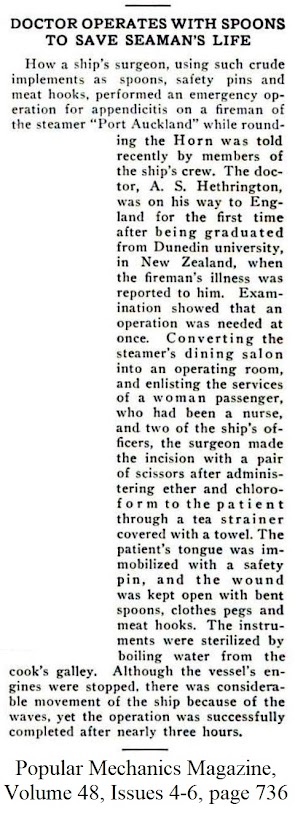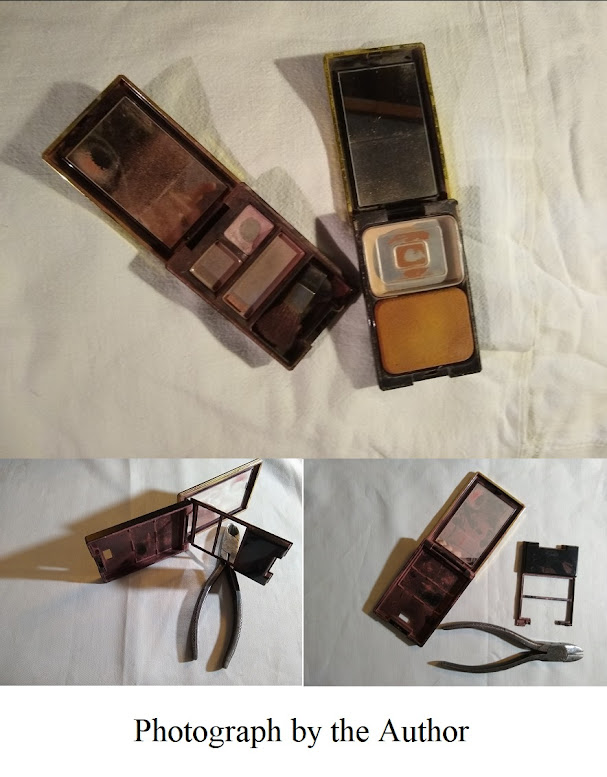100MPH
tape, duct tape, duck tape, it doesn’t matter what you call it, it is an
awesome product with literally thousands of uses. But who invented this life and time saving
tape, and what is its history?
During
World War II, Vesta Stoudt, a mother of eight, who had two sons in the armed
forces, went to work in Illinois’s Green River Ordnance Plant, inspecting and
packing the cartridges that were used to launch rifle grenades by the Army and
Navy. These cartridges were packed
eleven to a box, and like many of the boxes designed to carry military supplies,
they were taped shut with thin paper tape and waxed to make them gas, water, and
damp-proof. A tab of tape was left loose,
so that it could be pulled, to easily break the waterproof wax coating and open
the box. The thing was that the thin
paper tape wasn’t very strong, and the tape-tabs often tore off, as soldiers tried
to open the ammo boxes, leaving them desperately scrambling to tear open the
boxes under enemy fire. Vesta thought of
a solution to this difficulty, why not use a stronger, cloth-based waterproof
tape, instead of the weak paper tape? She
brought her suggestion to her supervisors at Green River Ordnance Plant, but
they ignored it.
However, Vesta wasn’t the
type of person to accept defeat so easily, especially with the lives of
soldiers and sailors at stake, so she decided to take her idea to the top, ALL
the way to the top – and on February 10, 1943, she wrote a letter to President
Franklin D. Roosevelt, explaining both the problem and her solution:
Vesta Stoudt, for her invention, received an official thank you letter
from the War Production Board and the Chicago Tribune gave her the War Workers
Award, on October 25th, 1943.
According to author Margaret Gurowitz, Johnson & Johnson called the new tape, “Duck
Tape”, because it was waterproof like a duck and because it was made with
cotton-duck fabric. After World War II,
it became known as “Duct Tape”, because it could be used to tape metal ducts
together.
During the Vietnam War, the soldiers called duct tape, “100 Mile an
Hour Tape”, because it could withstand winds up to 100 mph (160 kph) and
could be used to reinforce or repair helicopter rotor blades!
So,
what can you use duct tape for?
Oh, and duct tape doesn’t work below freezing (32oF or 0oC),
although it won’t be hurt by freezing and will work like normal when it returns
to temperatures above freezing. Duct
tape works well at temperatures between 40° to 120°F (4oC to 49oC),
depending on the brand, but it works best at room temperature. Additionally, it will keep sticking up to
150°F (66 oC), above that it will begin to lose adhesion, before
failing completely around 200° F (93oC).
Also, it is important to clean the surface and brush off any loose
particles and dirt from the surface you are taping, before applying duct tape. Apply the tape carefully, smoothing out any
pockets or rolls, for the best results.
As for what you can use it for, let your imagination run wild! I used to work in a steel mill, and it was
common to see someone with duct tape wrapped around a finger, or an arm, because
they had cut themselves and the closest item to cover and close the cut was
duct tape. Personally, I have used it on
hiking or canoeing expeditions, to cover cuts, hot or raw spots on feet. I have also used duct tape to make temporary repairs
of tents, boots, and even pants!
But
there are so many kinds, which is best?
Polyken 231 Military Grade, T-Rex® Brute Force™ Duct Tape, Gorilla
Tape or Duck Brand Duct Tape, which is best? The first three all claim that they are
stronger, more durable than the original Duck Brand Duct Tape. I have never used Polyken 231 or T-Rex® duct
tape, but I have used both Gorilla Tape and the
original Duck Brand Duct Tape. Personally,
I found that Gorilla Tape sticks better, is more water resistant, and is more
durable, in more situations, than the original Duck Brand Duct Tape. This agrees with Gorilla Tape’s claim that it
is “Made with double-thick adhesive, strong reinforced backing, and a tough
all-weather shell, this duct tape is great for projects and repairs both
indoors and out. Gorilla tape sticks to
smooth, rough and uneven surfaces, including wood, stone, stucco, brick, metal
and vinyl”.2
But in the end, any duct tape is better than no duct tape at all in an
emergency. So don’t leave home without
it!
Next week I am going on an adventure, and your regularly scheduled article
will be back the week after, so don’t forget to come back and read “OK I'm lost
and I'm having an Unexpected Overnighter©” where I will tell you all about how
I got lost and spent the night alone in the middle of the Allegheny National
Forest.
I
hope that you continue to enjoy The Woodsman’s Journal Online and look for me
on YouTube at BandanaMan Productions for other related videos, HERE. Don’t forget to follow me on both The
Woodsman’s Journal Online, HERE,
and subscribe to BandanaMan Productions on YouTube. If you have questions, as always, feel free
to leave a comment on either site. I
announce new articles on Facebook at Eric Reynolds, on Instagram at
bandanamanaproductions, and on VK at Eric Reynolds, so watch for me.
That
is all for now, and as always, until next time, Happy Trails!
Notes
1 “The Woman Who Invented Duct Tape”, by Margaret Gurowitz
2
From Gorillatough.com, https://www.gorillatough.com/product/black-gorilla-tape/
Sources
Armstrong,
Mark; “Gorilla, Duct or Flex Tape – Which Is Best Underwater?”, KayakGuru, January
5, 2023, [© Copyright 2023 by Kayak Guru], https://kayakguru.com/gorilla-duct-flex-underwater/,
accessed August 26, 2023
Dybedahl,
Matt; “Quick Tip: 25 Survival Uses for Duct Tape”, October 27, 2015, [© 2023 The Sportsman’s Guide,
Inc.] https://guide.sportsmansguide.com/duct-tape-survival/, accessed August 26, 2023
Gurowitz,
Margaret; “The Woman Who Invented Duct Tape”, June 21, 2012, ©
Johnson & Johnson Services, Inc. 2011, https://www.kilmerhouse.com/2012/06/the-woman-who-invented-duct-tape,
accessed August 26, 2023















































